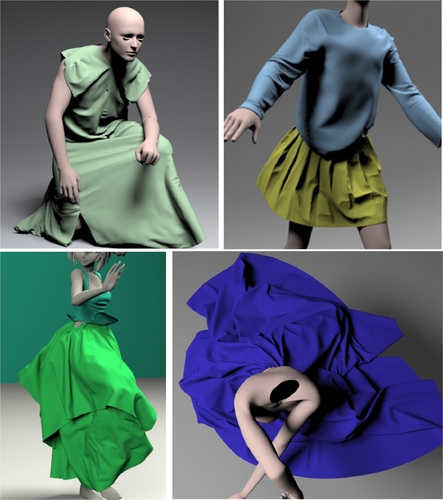Pre-recorded Sessions: From 4 December 2020 | Live Sessions: 10 – 13 December 2020
4 – 13 December 2020
Pre-recorded Sessions: From 4 December 2020 | Live Sessions: 10 – 13 December 2020
4 – 13 December 2020
#SIGGRAPHAsia | #SIGGRAPHAsia2020
#SIGGRAPHAsia | #SIGGRAPHAsia2020











Date/Time:
04 – 13 December 2020
All presentations are available in the virtual platform on-demand.
Lecturer(s):
Cheng Li, Zhejiang University, China
Min Tang, Zhejiang University, China
Ruofeng Tong, Zhejiang University, China
Ming Cai, Zhejiang University, China
Jieyi Zhao, University of Texas Health Science Center at Houston, United States of America
Dinesh Manocha, University of Maryland College Park, United States of America
Bio:
Description: We present a novel parallel algorithm for cloth simulation that exploits multiple GPUs for fast computation and the handling of very high resolution meshes. To accelerate implicit integration, we describe new parallel algorithms for sparse matrix-vector multiplication (SpMV) and for dynamic matrix assembly on a multi-GPU workstation. Our algorithms use a novel work queue generation scheme for a fat-tree GPU interconnect topology. Furthermore, we present a novel collision handling scheme that uses spatial hashing for discrete and continuous collision detection along with a non-linear impact zone solver. Our parallel schemes can distribute the computation and storage overhead among multiple GPUs and enable us to perform almost interactive simulation on complex cloth meshes, which can hardly be handled on a single GPU due to memory limitations. We have evaluated the performance with two multi-GPU workstations (with 4 and 8 GPUs, respectively) on cloth meshes with 0.5-1.65M triangles. Our approach can reliably handle the collisions and generate vivid wrinkles and folds at 2-5 fps, which is significantly faster than prior cloth simulation systems. We observe almost linear speedups with respect to the number of GPUs.
